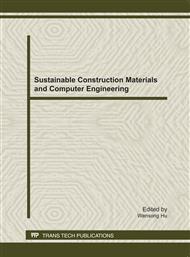[1]
Klaus R. Freischlad, Absolute interferometeric testing based on reconstruction of rotational shear, Appl. Opt. 40(2001).
DOI: 10.1364/ao.40.001637
Google Scholar
[2]
Chris J. Evans and Robert N. Kestner, Test optics error removal, Appl. Opt. 35(1996).
Google Scholar
[3]
G. Schulz and J. Schwider, Precise measurement of planeness, ', Appl. Opt. 6, 1077-1084(1967).
DOI: 10.1364/ao.6.001077
Google Scholar
[4]
G. Schulz and J. Grzanna, Absolute flatness testing by the rotation method with optimal measuring-error compensation, Appl. Opt. 31, 3767-3780(1992).
DOI: 10.1364/ao.31.003767
Google Scholar
[5]
K. -E. Elssner,A. Vogel.J. Grzanna, and G. Schulz, Establishing a flatness standard, Appl. Opt. 33, 2437-2446 (1994).
DOI: 10.1364/ao.33.002437
Google Scholar
[6]
B.S. Fritz, Absolute calibration of an optical flat, Opt. Eng. 23, 379-383(1984).
Google Scholar
[7]
C. Ai and J.C. Wyant, Absolute testing of flats decomposed to even and odd functions, in Interferometry: Surface Characterization and Testing, K. Creath and J.E. Greivenkamp, eds, Proc. Soc. Photo-Opt. Instrum. Eng. 1776, 73-83 (1992).
DOI: 10.1117/12.139247
Google Scholar
[8]
C. Ai and J.C. Wyant, Absolute testing of flats using even and odd functions, Appl. Opt. 32, 4698-4705(1993).
DOI: 10.1364/ao.32.004698
Google Scholar
[9]
C. Ai, L. -Z. Shao, and R.E. Parks, Absolute testing of flats using even and odd functions, in Optical fabrication and Testing, Vol. 24 of 1992 OSA Technical Digest Series(Optical Society of America, Washington, D.C., 1992).
DOI: 10.1364/oft.1992.pdp1
Google Scholar
[10]
F.M. Kuchel, Verfahren und Vorrichtung zur interferometrischen Absolutprufung von Planflachen, European patent EP 0 441 153 B1(14 August 1991).
Google Scholar
[11]
Chen Xu, Lei Chen and Jiayi Yin, Method for absolute flatness measurement of optical surface, Appl. Opt. 48 (2009).
Google Scholar
[12]
Peng Su, Absolute measurement of large mirror, Phd of University of Arizona. (2008).
Google Scholar
[13]
Xin Jia, Tingwen Xing, Error Analysis of Absolute Testing based on Even-Odd Functions Method, SPIE Vol. 7638-124(2010).
Google Scholar
[14]
Jia Xin, Xing Tingwen, Analysis of Absolute Testing based on Even-Odd Functions by Zernike polynomials, SPIE (2010) in press.
Google Scholar
[15]
Claus Freischlad, Method and apparatus for absolutely measuring flat and spherical surfaces with high spatal resolution, US Patent 6184994 (2001).
Google Scholar


